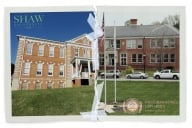You have /5 articles left.
Sign up for a free account or log in.
I wonder if you, savvy readers of this blog, would “recognize” me if we met outside of cyberspace. By this, I don’t mean recognize me physically, of course – you probably have not seen my picture – I just mean that a personality can be quite different when channeled through a different format, and I might seem quite different than you imagine me. My daughter’s teacher said to me just a couple weeks ago that my daughter “becomes bold” in her writing. Bold is a description you certainly wouldn’t expect of my slight, shy and cautious introvert of a daughter – although her teacher is correct: the personal narrative that her teacher referred to was strong, witty and brave even despite the fact that the essay recounts an event in which my daughter describes herself biting her nails and cowering in fear. I love that she can come out in her writing this way.
I wonder this not just idly, but also because I’ve been thinking about “blended learning” (using technological and web instructional tools in addition to face-to-face interactions) and online classes, and the implications of these tools on classrooms and careers of the future. Online learning is touted for multiple reasons, such as easing the burden for students with complex schedules balancing work or life demands and also the potential for engaging students in large and small classes with a whole new, effective ways of interacting with each other and instructors. I haven’t heard much about the added benefit of using online and blended learning methods to ease constraints for faculty and instructors with children, but the more I learn and think about these rapidly evolving tools, the greater power I see for these methods to change instructional structures in ways that could really break down some of the walls that make academia so hard for faculty to balance with families. (I’m not saying it will make the teaching easier – and in fact beginning to implement new teaching techniques will certainly require more time and energy – but potentially provide a pay off in greater flexibility than a traditional class model can provide).
In other ways I have also started appreciating an avatar self – I curate and manage an online database for Lepidoptera (moths and butterflies), for example, and spend an increasing time interacting with researchers I’ve never met in person (I just practiced my French with a colleague in Belgium; thanks to Google Translate, I could impress him with correct spelling and getting all my accented characters right!) The technology behind “collaboratories” and wikis allows more and more on-line data sharing, analysis and collaboration allows for inclusion of researchers and expertise at distant and non-traditional facilities (that’s me!). This technology still has a ways to go, but it’s rapidly heading in the direction to understand and facilitate what successful research collaborations require (and one thing I note with interest is that personal and informal interactions are very important for collaborations).
It’s exciting to think about developing future teaching and research careers into the digital realm, where we have a chance to redesign traditional roles and include more flexibility into our ever-diversifying academic communities. And in so doing, the ways we interact and get to know and discover ourselves and each other will diversify too.
While there’s no question that academia, right along with so much of our life is rapidly incorporating social media tools, there is of course recognition of the need for the non-digital realm, too – and blending for the benefit of both. Thinking about the empty nest conversations of Libby and Susan from the last week or so gives me another appreciation for all these technologies that my kids so easily soak up without even considering that they didn’t exist until very recently - the web, email, Skype, instant messaging (we haven’t introduced facebook yet). At some date in the not-too-distant-future, as my kids become adults and leave our nest I imagine these computer tools and others will constitute a big part of our interactions. So I make a big effort now to emphasize the pleasures of our real-world connection in our technology/real life home blend: voices, smells, hugs, snuggles, hand-holds, because no matter how good the internet gets, I can’t believe virtual hugs will ever do what real ones can. And I want to make sure they know that!





